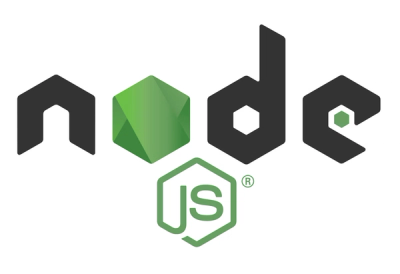
Security News
ECMAScript 2025 Finalized with Iterator Helpers, Set Methods, RegExp.escape, and More
ECMAScript 2025 introduces Iterator Helpers, Set methods, JSON modules, and more in its latest spec update approved by Ecma in June 2025.

Small module which helps you query the Plex Media Server HTTP API.
$ npm install plex-api --save
PlexAPI(options | hostname)
Instantiate a PlexAPI client.
The parameter can be a string representing the server's hostname, or an object with the following properties:
Options:
32400)false)generated uuid v4. Note: you should really provide this rather than let it get generated. Every time your app runs, a new "device" will get registered on your Plex account, which can lead to poor performance once hundreds or thousands of them get created. Trust me!Plex Web, Plex Home Theater, Plex for Xbox One. Default Node.js App1.0Node.js AppChrome, Plex Home Theater, Windows. Default is Node.js.Windows, iPhone, Xbox One. Default is whatever os.platform() returns.Here's an example of what an app shows up as on the Plex web interface

The rows in that example from top to bottom are deviceName, version, product, and device.
Retrieve content from URI
The parameter can be a string representing the URI, or an object with the following properties:
Aside from requesting the API and returning its response, an .uri property are created to easier follow the URIs available in the HTTP API. At the moment URIs are attached for Directory and Server items.
var PlexAPI = require("plex-api");
var client = new PlexAPI("192.168.0.1");
client.query("/").then(function (result) {
console.log("%s running Plex Media Server v%s",
result.friendlyName,
result.version);
// array of children, such as Directory or Server items
// will have the .uri-property attached
console.log(result._children);
}, function (err) {
console.error("Could not connect to server", err);
});
Send a POST request and retrieve the response
This is identical to query(), except that the request will be a POST rather than a GET. It has the same required and optional parameters as query().
Note that the parameters can only be passed as a query string as part of the uri, which is all Plex requires. (Content-Length will always be zero)
var PlexAPI = require("plex-api");
var client = new PlexAPI("192.168.0.1");
client.postQuery("/playQueue?type=video&uri=someuri&shuffle=0").then(function (result) {
console.log("Added video to playQueue %s",
result.playQueueID);
// array of children, such as Directory or Server items
// will have the .uri-property attached
console.log(result._children);
}, function (err) {
console.error("Could not connect to server", err);
});
Send a PUT request and retrieve the response
This is identical to query(), except that the request will be a PUT rather than a GET. It has the same required and optional parameters as query(). It's is used to update parts of your Plex library.
Note that the parameters can only be passed as a query string as part of the uri, which is all Plex requires. (Content-Length will always be zero)
var PlexAPI = require("plex-api");
var client = new PlexAPI("192.168.0.1");
client.putQuery("/library/sections/3/all?type=1&id=123&summary.value=updatedSummaryText")
.then(function (result) {
console.log("Description of video by id 123 has been set to 'updatedSummaryText'");
}, function (err) {
console.error("Could not connect to server", err);
});
Send a DELETE request and retrieve the response
This is identical to query(), except that the request will be a DELETE rather than a GET. It has the same required and optional parameters as query(). It's is used to delete parts of your Plex library.
Note this will also delete the media files on hard disk! This can be allowed or forbidden in the plex-media-server options. Returns status code 403 if delete is not allowed in the plex-media-server options.
var PlexAPI = require("plex-api");
var client = new PlexAPI("192.168.0.1");
client.deleteQuery("/library/metadata/10001/media/2002")
.then(function () {
console.log("Media was successfully deleted");
}, function (err) {
console.error("Could not connect to server", err);
});
Perform an API action
When performing an "action" on the HTTP API, the response body will be empty.
As the response content itself is worthless, perform() acts on the HTTP status codes the server responds with.
It has the same required and optional parameters as query().
var PlexAPI = require("plex-api");
var client = new PlexAPI("192.168.0.1");
// update library section of key "1"
client.perform("/library/sections/1/refresh").then(function () {
// successfully started to refresh library section #1
}, function (err) {
console.error("Could not connect to server", err);
});
Find matching child items on URI
Uses query() behind the scenes, giving all directories and servers the beloved .uri property. It has the same required and optional parameters as query, in addition to a second optional criterias parameter.
var PlexAPI = require("plex-api");
var client = new PlexAPI("192.168.0.1");
// filter directories on Directory attributes
client.find("/library/sections", {type: "movie"}).then(function (directories) {
// directories would be an array of sections whose type are "movie"
}, function (err) {
console.error("Could not connect to server", err);
});
// criterias are interpreted as regular expressions
client.find("/library/sections", {type: "movie|shows"}).then(function (directories) {
// directories type would be "movie" OR "shows"
}, function (err) {
console.error("Could not connect to server", err);
});
// shorthand to retrieve all Directories
client.find("/").then(function (directories) {
// directories would be an array of Directory items
}, function (err) {
throw new Error("Could not connect to server");
});
An authenticator is used by plex-api to authenticate its request against Plex Servers with a PlexHome setup. The most common authentication mechanism is by username and password.
You can provide your own custom authentication mechanism, read more about custom authenticators below.
Comes bundled with plex-api. Just provide options.username and options.password when creating a PlexAPI instance and you are good to go.
See the plex-api-credentials module for more information about its inner workings.
An authentication module that provides an interface for authenticating with Plex using a PIN, like the official clients do.
https://www.npmjs.com/package/plex-api-pinauth
In its simplest form an authenticator is an object with one required function authenticate() which should return the autentication token needed by plex-api to satisfy Plex Server.
An optional method initialize() could be implemented if you need reference to the created PlexAPI instance when it's created.
{
// OPTIONAL
initialize: function(plexApi) {
// plexApi === the PlexAPI instance just created
},
// REQUIRED
authenticate: function(plexApi, callback) {
// plexApi === the PlexAPI instance requesting the authentication token
// invoke callback if something fails
if (somethingFailed) {
return callback(new Error('I haz no cluez about token!'));
}
// or when you have a token
callback(null, 'I-found-this-token');
}
}
You can provide a custom function responsible for parsing all Plex Server responses if you need to, by providing it in the responseParser when instantiating a Plex API client.
The default implementation either parses the JSON in the response from the Plex Server, converts XML to a JavaScript object or returns the response as is, depending on the response Content-Type header.
A response parsing function gets two arguments provided: response, body and is expected to return a Promise.
function myCustomJsonResponseParser(response, body) {
const bodyAsString = body.toString('ut8');
return Promise.resolve(bodyAsString).then(JSON.parse);
}
For more information about the API capabilities, see the unofficial Plex API documentation. The PlexInc's desktop client wiki might also be valueable.
$ npm install
$ npm test
Automatically run all tests whenever files has been changed:
$ npm run test:watch
NB! This project runs prettier for code formatting. The test script will fail if prettier rules are not followed. Scripts can be formatted by running:
$ npm run format
or by adding an editor plugin/extension as described in the prettier project.
plex-api has proven to be useful in more than one project over the years.
Do you have project which uses plex-api? Please tell us about it and we'll list it here :)
Alexa (Amazon Echo) app for interacting with a Plex Server and controlling client playback.
https://github.com/OverloadUT/alexa-plex by @OverloadUT.
The Plex Remote control app for the Homey device.
https://github.com/MikeOne/nl.kikkert.plex by @MikeOne.
See how much of your media from Plex is available on Netflix with a CLI command.
https://github.com/SpaceK33z/plex2netflix by @SpaceK33z.
Contributions are more than welcome! Create an issue describing what you want to do. If that feature is seen to fit this project, send a pull request with the changes accompanied by tests.
(The MIT License)
Copyright (c) 2013-2018 Phillip Johnsen <johphi@gmail.com>
Permission is hereby granted, free of charge, to any person obtaining a copy of this software and associated documentation files (the "Software"), to deal in the Software without restriction, including without limitation the rights to use, copy, modify, merge, publish, distribute, sublicense, and/or sell copies of the Software, and to permit persons to whom the Software is furnished to do so, subject to the following conditions:
The above copyright notice and this permission notice shall be included in all copies or substantial portions of the Software.
THE SOFTWARE IS PROVIDED "AS IS", WITHOUT WARRANTY OF ANY KIND, EXPRESS OR IMPLIED, INCLUDING BUT NOT LIMITED TO THE WARRANTIES OF MERCHANTABILITY, FITNESS FOR A PARTICULAR PURPOSE AND NONINFRINGEMENT. IN NO EVENT SHALL THE AUTHORS OR COPYRIGHT HOLDERS BE LIABLE FOR ANY CLAIM, DAMAGES OR OTHER LIABILITY, WHETHER IN AN ACTION OF CONTRACT, TORT OR OTHERWISE, ARISING FROM, OUT OF OR IN CONNECTION WITH THE SOFTWARE OR THE USE OR OTHER DEALINGS IN THE SOFTWARE.
FAQs
Simple wrapper for querying against HTTP API on the Plex Media Server
The npm package plex-api receives a total of 907 weekly downloads. As such, plex-api popularity was classified as not popular.
We found that plex-api demonstrated a not healthy version release cadence and project activity because the last version was released a year ago. It has 1 open source maintainer collaborating on the project.
Did you know?

Socket for GitHub automatically highlights issues in each pull request and monitors the health of all your open source dependencies. Discover the contents of your packages and block harmful activity before you install or update your dependencies.

Security News
ECMAScript 2025 introduces Iterator Helpers, Set methods, JSON modules, and more in its latest spec update approved by Ecma in June 2025.

Security News
A new Node.js homepage button linking to paid support for EOL versions has sparked a heated discussion among contributors and the wider community.

Research
North Korean threat actors linked to the Contagious Interview campaign return with 35 new malicious npm packages using a stealthy multi-stage malware loader.